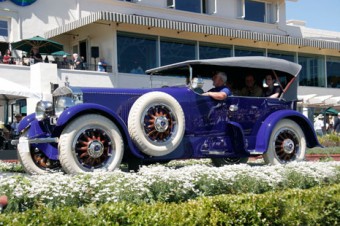
Making tires black, instead of the natural white color of rubber, produces a much stronger and longer lasting tire. Originally rubber tires were white, which is the natural color of rubber. In the early 1900s, Binney & Smith began selling their carbon black chemicals to Goodrich Tire Company, as it was found that the use of carbon black in rubber manufacturing significantly increased certain desirable qualities for rubber meant to be turned into tires. Interestingly, Binney & Smith would later switch to making school products, and, eventually, re-name their company after their most popular product, Crayola Crayons.
In any event, carbon black works as a reinforcing filler in rubber, which increases the durability and strength of the rubber. Specifically, adding about 50% by weight of carbon black increases the road-wear abrasion of the produced tire by as much as 100 fold and improves the tensile strength of the tire by as much as 1008%. The tensile strength, for those who don’t know, is the amount of force needed to pull something to its breaking or bursting point.
Adding carbon black also helps conduct heat away from certain hot spots on the tire; specifically, in the tread and belt areas, which can get particularly hot at times while driving. This reduces thermal damage on the tire, which further extends its lifespan.
From a purely cosmetic standpoint, black tires are also much easier to keep looking clean, which also makes them desirable over natural white rubber tires. Interestingly, in modern times, white wall tires or fully white tires are sometimes thought as more luxurious, particularly on classic cars. However, when fully black tires first came out, they were considered the more desirable tire for their prestige and tended to only be found on high end luxury cars.
Carbon black itself is simply nearly pure elemental carbon in colloidal particle form. It is classically made by simply charring any organic material. Examples of this are Ivory Black, made by charring ivory or bones, and Lamp Black, made from the soot of oil lamps. Carbon black for industrial use today is typically produced as Furnace Black and Thermal Black. Furnace Black is produced using heavy aromatic oils. Thermal Black is produced using natural gas, generally methane, injected into a very hot furnace where, in the absence of much air, carbon black and hydrogen are produced.
Bonus Facts:
- Rather than using carbon black in shoes, the more common additive to the rubber is fumed silica, which has similar reinforcing properties as carbon black, but leaves the rubber white. The downside of using silica-based additives on automotive tires is that they have much worse abrasion wear properties than tires with carbon black. However, they do offer better handling on wet surfaces and have a lower rolling loss, which increases fuel efficiency. Because of this, there are some tires that are starting to be made with silica-based additives, instead of carbon black, but this is still relatively rare.
- Around 70% of all carbon black pigment used in the word today is used for tires. Another 20% goes into belts, hoses, and other such rubber items. Most of the remaining 10% go into black coatings for items, as well as inks and toner in printing.
- Carbon black is not the same thing as activated carbon or soot. Carbon black has a much higher surface area to volume ratio than soot and also has much less polycyclic aromatic hydrocarbon in it.
- Despite research indicating carbon black may be a carcinogen, it is used in certain food coloring.
- Binney & Smith, which later became Crayola, is not only credited for making tires black, instead of white, but also is the company that originally created the red paint color that is now traditional on barns, which was a red oxide pigment.
- No one knows exactly where the word “tire” derives from. The leading theories are that it either derives from “attire” or from “to tie”. The earliest tires were simply bands of iron or other metal. The application of the metal band on the wooden wheels was accomplished by heating the metal tire, then placing it over the wooden wheel. Next, they would douse it in cold water, which would cause the metal to rapidly contract and secure itself to the wheel, with the outer ring “tying” the wheel together, hence the proposed “tie” origin.
- Binney & Smith’s “carbon gas blacks” earned them a gold medal in chemical and pharmaceutical arts. The company was originally founded in 1864 and produced types of Charcoal and Lamp blacks.
- The first practical pneumatic tire was developed by John Boyd Dunlop, who was originally a veterinarian. He created the tire to help his son who suffered from headaches when riding his bike. The rubber tire made for a much smoother ride for him on rough roads than wooden wheels.
- Around 1 billion tires are made annually.
- The earliest available carbon black product used for commercial purposes was “lamp black”, produced by the Chinese over 3500 years ago. However, these early forms of carbon black were relatively impure compared to modern carbon black.
No comments:
Post a Comment